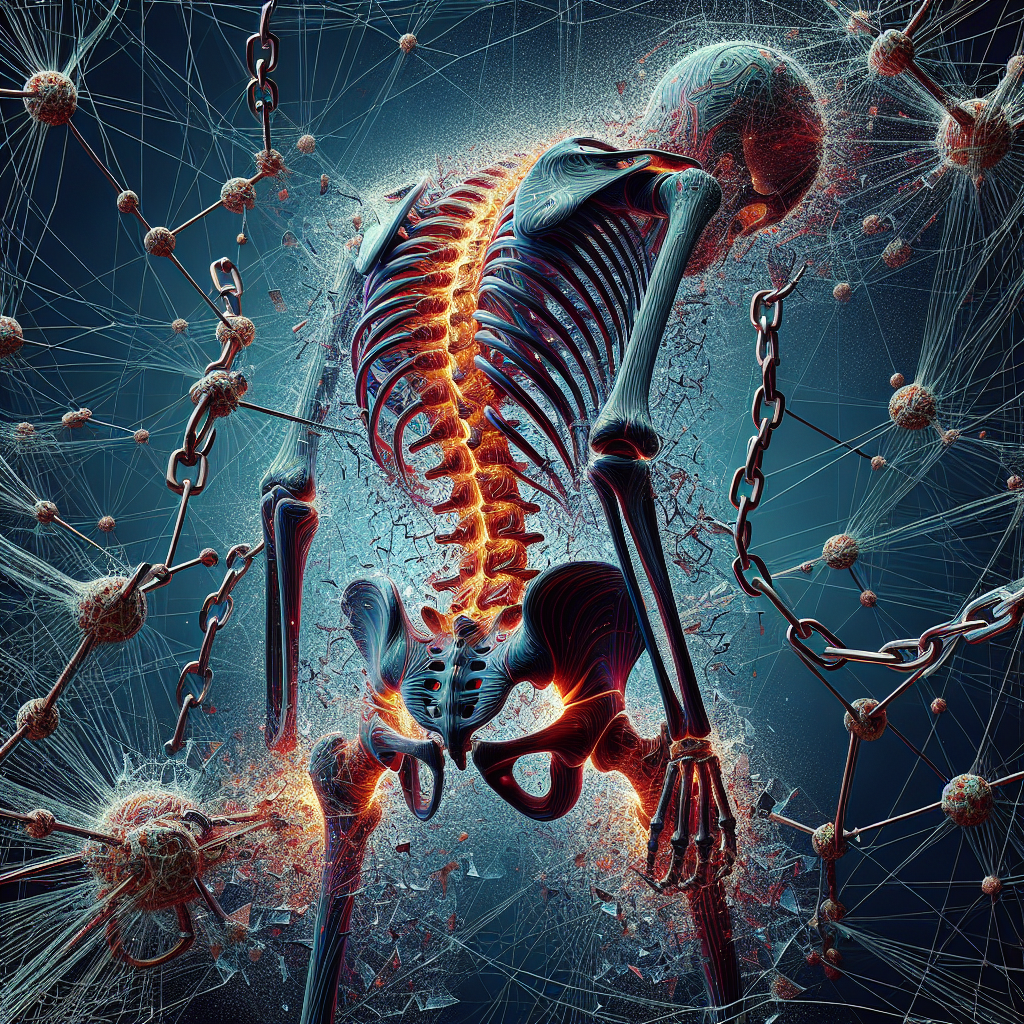
Pain in the kidneys. The concept of health. The girl is holding her back. Kidney disease, pyelonephritis, kidney stones, sand in the kidneys.
What Are Common Misconceptions About Sacroiliac Joint Pain?
You’ve probably heard of sacroiliac joint pain, but do you really know what it entails? This article will shed light on the common misconceptions surrounding this type of pain, offering insightful explanations to help you better understand the condition. From the causes to the treatment options, we’ll tackle misconceptions head-on, ensuring that you have a clear and accurate understanding of sacroiliac joint pain. So, let’s debunk those myths and replace them with factual knowledge!

Misconception: Sacroiliac Joint Pain is Rare
Understanding the Prevalence of Sacroiliac Joint Pain
Sacroiliac joint pain, contrary to popular belief, is not as rare as one might think. In fact, it is estimated that up to 25% of people with lower back pain have sacroiliac joint dysfunction as the underlying cause. The sacroiliac joint, located at the base of the spine where the sacrum meets the iliac bones of the pelvis, can become inflamed or injured, leading to pain and discomfort. It is important to recognize the prevalence of sacroiliac joint pain in order to improve diagnosis and treatment outcomes.
The Importance of Accurate Diagnosis
Accurate diagnosis is crucial when it comes to sacroiliac joint pain, as it is often overlooked or misdiagnosed. Many individuals with sacroiliac joint dysfunction are mistakenly diagnosed with other conditions such as herniated discs or sciatica. This misdiagnosis can lead to ineffective treatments and prolonged pain. It is essential for healthcare professionals to be knowledgeable about sacroiliac joint pain and its symptoms in order to provide accurate diagnoses and appropriate treatment plans.
Misconception: Sacroiliac Joint Pain is Only Caused by Injury
Factors Contributing to Sacroiliac Joint Pain
While injuries can certainly contribute to sacroiliac joint pain, they are not the sole cause. Various factors can contribute to the development of sacroiliac joint dysfunction, including pregnancy, certain activities or occupations that involve repetitive movements or heavy lifting, hormonal imbalances, and even degenerative conditions such as arthritis. It is important to recognize that sacroiliac joint pain can result from both traumatic and non-traumatic causes.
Understanding Non-Traumatic Causes
Non-traumatic causes of sacroiliac joint pain should not be underestimated. For instance, hormonal changes during pregnancy can lead to increased laxity in the ligaments surrounding the joint, causing instability and pain. Similarly, individuals who repeatedly engage in activities that place stress on the sacroiliac joint, such as running or lifting heavy objects, can also experience pain and dysfunction. It is crucial to consider both traumatic and non-traumatic causes when diagnosing and treating sacroiliac joint pain.
Misconception: Sacroiliac Joint Pain Only Affects Older Adults
Sacroiliac Joint Pain Across Age Groups
Contrary to the misconception that sacroiliac joint pain only affects older adults, it can actually occur in individuals of all age groups. While it is true that the prevalence of sacroiliac joint dysfunction tends to increase with age due to wear and tear on the joint, younger individuals can also experience this condition. Factors such as pregnancy, trauma, and certain occupations or activities can contribute to sacroiliac joint pain in individuals of any age. It is important to be aware of this misconception and recognize that sacroiliac joint pain can affect individuals regardless of their age.
Recognizing Symptoms in Younger Individuals
Recognizing the symptoms of sacroiliac joint pain in younger individuals is essential for early diagnosis and intervention. Younger individuals may experience symptoms such as pain in the lower back, hips, buttocks, or legs, as well as difficulty standing or walking for extended periods. It is important for healthcare professionals to be mindful of these symptoms and consider sacroiliac joint dysfunction as a potential cause, even in younger patients. By recognizing and addressing sacroiliac joint pain early on, we can prevent long-term complications and improve quality of life.
Misconception: Sacroiliac Joint Pain is the Same as Lower Back Pain
Distinguishing Between Sacroiliac Joint Pain and Lower Back Pain
Although sacroiliac joint pain can manifest as lower back pain, it is important to distinguish between the two. While both conditions can cause discomfort in the lower back, sacroiliac joint pain is more localized to the area of the sacroiliac joint and can radiate to the hips, buttocks, or legs. On the other hand, lower back pain can be more diffuse and may not be solely attributed to sacroiliac joint dysfunction. By distinguishing between sacroiliac joint pain and lower back pain, healthcare professionals can provide targeted treatments and effectively manage the underlying cause of the pain.
The Complexity of Sacroiliac Joint Dysfunction
Sacroiliac joint dysfunction is a complex condition that requires careful evaluation and diagnosis. Unlike lower back pain, which can often be attributed to specific anatomical structures such as discs or vertebrae, sacroiliac joint dysfunction can be more elusive to identify. The sacroiliac joint is a synovial joint, meaning it is surrounded by a joint capsule and contains fluid, allowing for movement. Disruption or dysfunction of this joint can lead to pain and instability. It is crucial to understand the complexity of sacroiliac joint dysfunction in order to provide appropriate treatment and management strategies.

Misconception: Sacroiliac Joint Pain is Temporary and Self-Resolving
Chronic Nature of Sacroiliac Joint Pain
Contrary to the misconception that sacroiliac joint pain is temporary and will resolve on its own, it can actually become a chronic condition if left untreated. Sacroiliac joint pain can persist for months or even years, negatively impacting one’s quality of life. Ignoring or dismissing the pain can lead to further deterioration of the joint and worsening symptoms. It is important to seek timely intervention to address sacroiliac joint pain and prevent it from becoming a long-term, chronic issue.
The Importance of Timely Intervention
Early intervention is key when it comes to sacroiliac joint pain. Seeking professional help and receiving a proper diagnosis and treatment plan can prevent the pain from becoming chronic and potentially leading to complications. Timely intervention may involve a combination of conservative treatments such as physical therapy, chiropractic care, and pain management techniques. By addressing sacroiliac joint pain early on, individuals can experience relief and regain their ability to perform daily activities without limitations.
Misconception: Sacroiliac Joint Pain Only Results from Structural Abnormalities
Exploring Various Causes of Sacroiliac Joint Pain
While structural abnormalities can certainly contribute to sacroiliac joint pain, they are not the only cause. In addition to injuries or misalignments of the joint, inflammation, muscle imbalances, and even abnormal gait patterns can contribute to sacroiliac joint dysfunction. It is important to take into account the various causes of sacroiliac joint pain in order to develop a comprehensive treatment plan that addresses the underlying factors contributing to the pain.
Functional Factors and Sacroiliac Joint Dysfunction
Functional factors, such as muscle imbalances or abnormalities in movement patterns, can play a significant role in sacroiliac joint pain. For example, weak or tight muscles surrounding the sacroiliac joint can cause instability and pain. Additionally, poor posture or faulty movement patterns during activities can further exacerbate the dysfunction. Addressing these functional factors through targeted exercises, physical therapy, and postural correction can help alleviate sacroiliac joint pain and improve overall function.

The Risk of Untreated Sacroiliac Joint Pain
Failing to seek medical treatment for sacroiliac joint pain can have detrimental consequences. Without proper diagnosis and intervention, the pain can persist and worsen over time, leading to decreased mobility and quality of life. Additionally, untreated sacroiliac joint pain can contribute to the development of compensatory movement patterns or muscle imbalances, potentially causing further issues in the musculoskeletal system. It is important to recognize the need for medical treatment and not dismiss sacroiliac joint pain as a minor issue that will resolve on its own.
Effective Treatment Options Available
Fortunately, there are effective treatment options available for sacroiliac joint pain. Depending on the underlying cause and severity of the pain, treatment may include a combination of conservative measures such as physical therapy, chiropractic care, medication, and injections to reduce inflammation and alleviate pain. In some cases, surgical intervention may be necessary to address structural abnormalities or severe cases of sacroiliac joint dysfunction. It is important to consult with a healthcare professional who specializes in sacroiliac joint pain to determine the most appropriate treatment approach for individual cases.
Misconception: Sacroiliac Joint Pain Can be Diagnosed Through Imaging Alone
Limitations of Diagnostic Imaging
While diagnostic imaging, such as X-rays or MRIs, can be helpful in evaluating sacroiliac joint pain, they have limitations when it comes to diagnosis. Structural abnormalities or inflammation may not always be visible on imaging, leading to false negatives or inconclusive results. Additionally, imaging alone may not provide a complete picture of the functional aspects and movement patterns contributing to the pain. It is important to consider imaging as a tool, but not solely rely on it for accurate diagnosis of sacroiliac joint pain.
Importance of Comprehensive Evaluation
A comprehensive evaluation, including a thorough medical history, physical examination, and assessment of functional movement patterns, is essential for diagnosing sacroiliac joint pain. Healthcare professionals specializing in sacroiliac joint dysfunction often employ specific provocative tests to reproduce the pain and confirm the involvement of the sacroiliac joint. Combining imaging findings with a comprehensive evaluation allows for a more accurate diagnosis and tailored treatment plan. It is crucial to take a multi-faceted approach when evaluating sacroiliac joint pain in order to provide the most effective care.

Misconception: Sacroiliac Joint Pain is Only Managed through Medication
Multidisciplinary Approaches to Pain Management
While medication can provide temporary relief for sacroiliac joint pain, it is not the only management option available. Multidisciplinary approaches, incorporating various healthcare professionals such as physical therapists, chiropractors, and pain management specialists, are often necessary to address the underlying causes of the pain and provide long-term relief. These multidisciplinary approaches may include a combination of manual therapies, therapeutic exercises, modalities, and pain management techniques to manage and alleviate sacroiliac joint pain.
Non-Pharmacological Interventions for Sacroiliac Joint Pain
Non-pharmacological interventions can also play a significant role in managing sacroiliac joint pain. Physical therapy, for example, can help improve muscle imbalances, restore joint stability, and enhance overall function. Chiropractic care and osteopathic manipulative treatment can provide manual techniques to address joint restrictions and alleviate pain. In addition, modalities such as heat or cold therapy, ultrasound, or electrical stimulation may be used to reduce pain and inflammation. It is important to explore non-pharmacological interventions alongside medication to provide comprehensive treatment for sacroiliac joint pain.
Misconception: Sacroiliac Joint Dysfunction Occurs in Isolation
Comorbidities Associated with Sacroiliac Joint Dysfunction
Sacroiliac joint dysfunction is often associated with other comorbidities. For example, individuals with sacroiliac joint dysfunction may also experience hip or knee pain, as well as issues with the lumbar spine. Dysfunction or compensation in one area of the musculoskeletal system can impact adjacent areas, leading to a chain of dysfunctions. It is crucial to recognize the potential comorbidities associated with sacroiliac joint dysfunction and address them in order to achieve holistic treatment and optimal outcomes.
The Need for Holistic Treatment
Considering the interconnectedness and potential comorbidities associated with sacroiliac joint dysfunction, a holistic treatment approach is necessary. This approach involves addressing the underlying causes and dysfunctions not only within the sacroiliac joint, but also in the surrounding structures and the entire musculoskeletal system. By taking a comprehensive and holistic approach to treatment, healthcare professionals can effectively manage sacroiliac joint pain, prevent further complications, and improve overall function and quality of life for individuals experiencing this condition.
In conclusion, sacroiliac joint pain is more prevalent than commonly believed and can affect individuals of all age groups. It is important to understand the various causes and distinguish sacroiliac joint pain from lower back pain in order to provide accurate diagnosis and appropriate treatment. Timely intervention and comprehensive evaluation, including non-pharmacological interventions, are crucial for effectively managing sacroiliac joint pain. By dispelling misconceptions and taking a holistic treatment approach, healthcare professionals can improve outcomes and provide relief for individuals suffering from sacroiliac joint pain.







